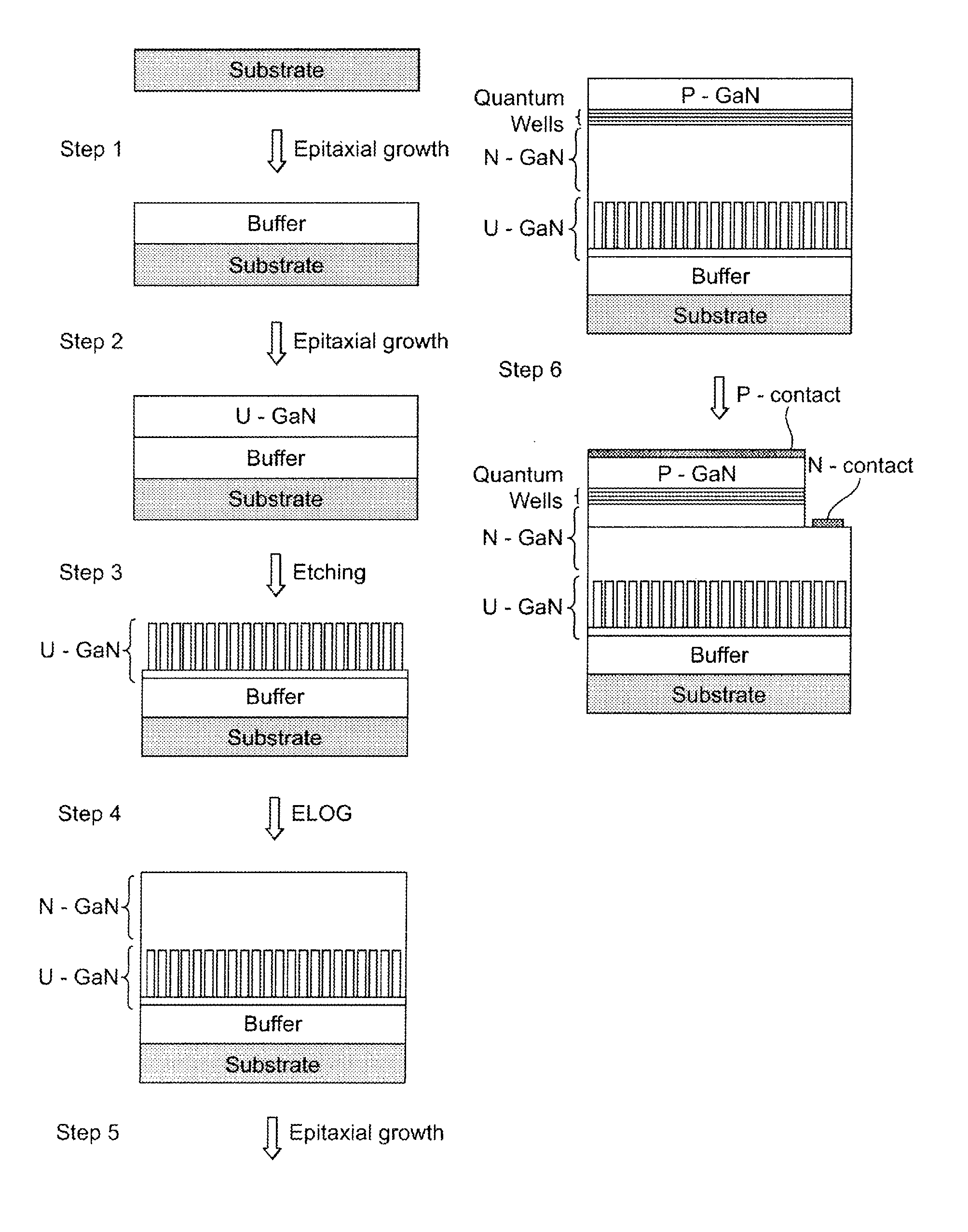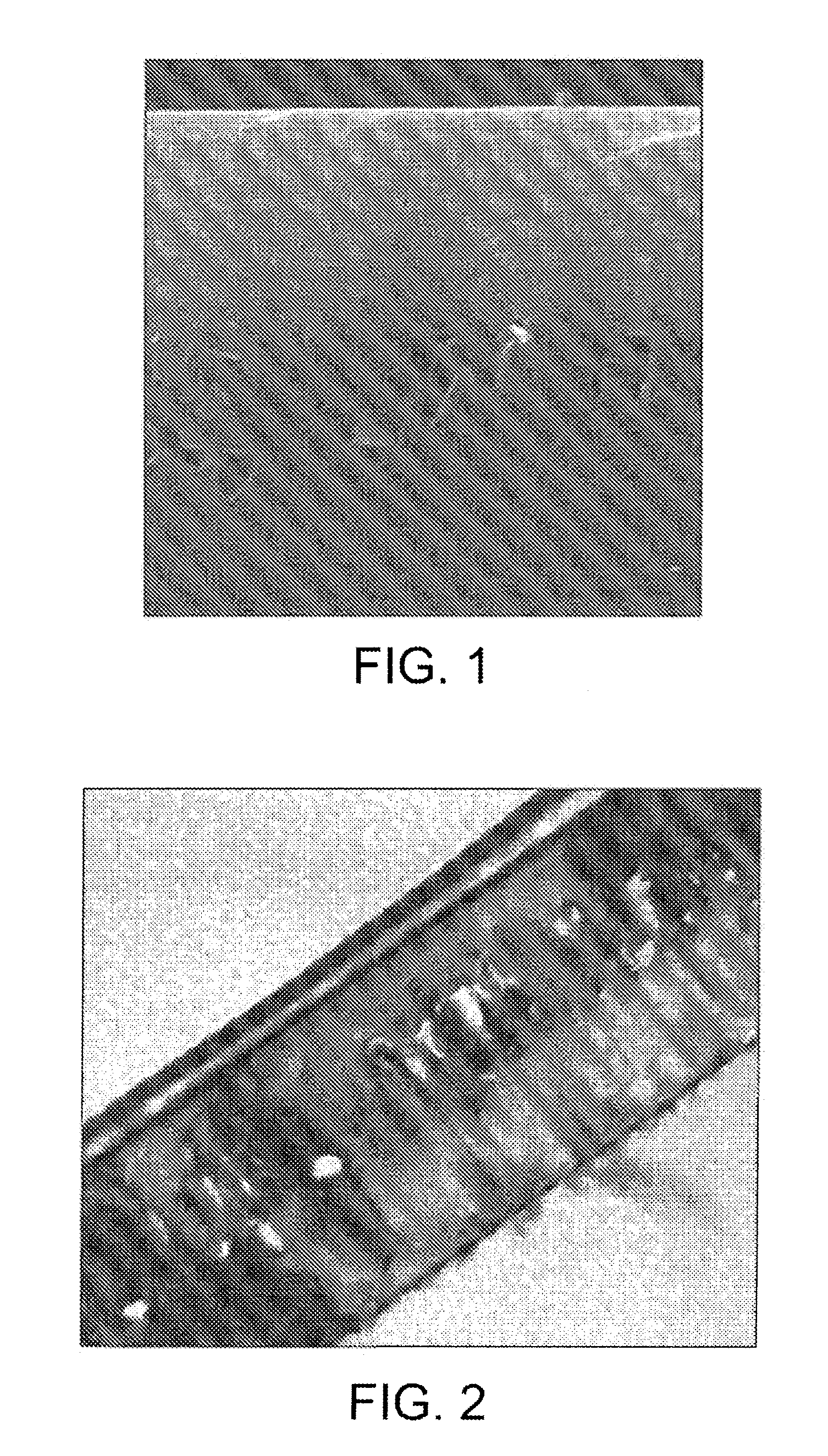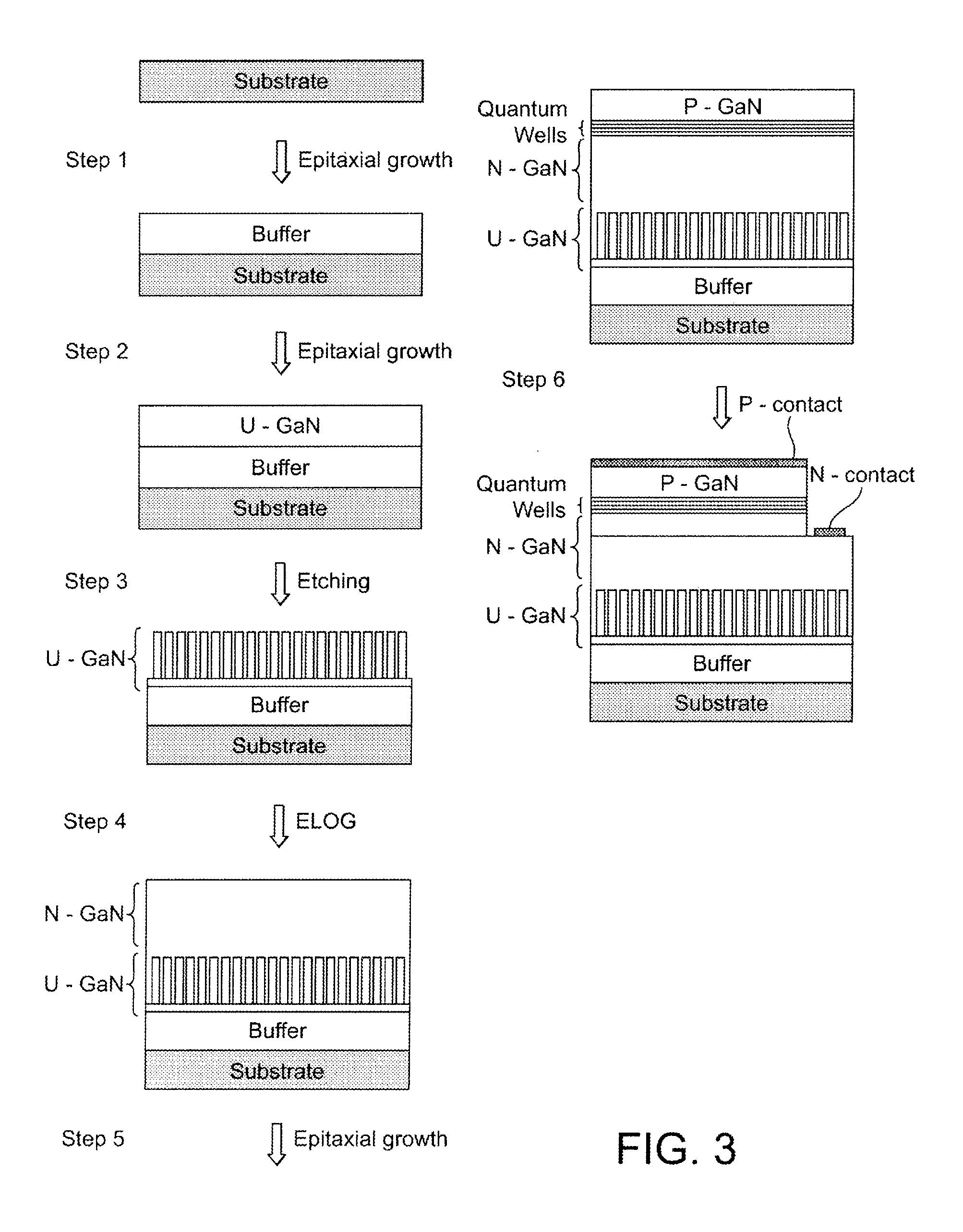Production of semiconductor devices
- Summary
- Abstract
- Description
- Claims
- Application Information
AI Technical Summary
Benefits of technology
Problems solved by technology
Method used
Image
Examples
example 1
[0079]Example 1 relates to the growth and fabrication of full light emitting diode (LED) devices with insulating substrates. FIG. 3 schematically shows the process flow for such a method. Each device is attached to the nano-column substrate. The nano-column substrate enhances the light extraction from the top. The low strain and low defect lateral-grown layer improves the internal quantum efficiency of the devices.
[0080]In this Example, a c-plane-oriented sapphire substrate of about 2 inches (5.08 cm) in diameter is used, on which a buffer of GaN grown at around 350-550° C. of about 20 nm thickness, followed by undoped GaN of about 1 μm thickness is epitaxially grown as shown in Step 1 of FIG. 3. Un-doped U—GaN of about 2-3 μm is deposited by MOCVD (Step 2 of FIG. 1) to form the template for the fabrication of nano-columns. Before loading, the GaN template is degreased in KOH for few seconds, rinsed in de-ionized water, etched in a H2SO4 / H3PO4=3:1 solution at about 80° C. for few mi...
example 2
[0088]Similarly to Example 1, the initial epitaxial lateral overgrowth is carried out by a MOCVD growth process. However, in this Example, trimethylaluminum (TMA) partially or totally replaces the trimethylgallium (TMG) used in Example 1 to grow an AlGaN layer.
[0089]Epitaxial growth of the full device, in this case an LED, is continued in the MOCVD reactor. The LED structure grown comprises the following layers: an n-type Si-doped AlGaN layer (about 1.5-2 μm), an AlxGa1−xN / AlyGa1−yN MQW active region (about 35 Å / 100 Å, 2-6 pairs, and y≧x+0.03), an AlGaN:Mg capping layer (˜200 Å), and p-type Mg-doped AlGaN (about 0.2-0.3 μm). The electron and hole concentration in the AlGaN:Si and AlGaN:Mg layers are about 1018 cm−3 and 6×1017 cm−3 respectively. The LEDs produced are suitable for producing light of UV region wavelength.
example 3
[0090]In this Example, the template used is a-plane GaN or AlGaN grown on top of a γ-plane sapphire substrate. Otherwise the production of nano-columns is as described for Examples 1 or 2. This template has particular advantage that it may be used to grow a non-polar semiconductor layer, which may be especially beneficial for the fabrication of optical components such as white LEDs (see below).
[0091]Epitaxial growth of the full device, in this case an LED, is continued in the MOCVD reactor. The LED structure produced comprises the following layers: an n-type Si-doped GaN layer (about 1.5-2 μm), an InGaN / GaN MQW active region (6 pairs QWs, with the quantum well width of 25, 35, 45, 55, 75, 90 Å and barrier of 100 Å), an AlGaN:Mg capping layer (˜200 Å), and p-type Mg-doped GaN (about 0.2-0.3 μm). The electron and hole concentration in the GaN:Si and GaN:Mg layers are about 3×1018 cm−3 and 6×1017 cm−3, respectively. This device will give a much broader bandwidth than conventional LEDs,...
PUM
 Login to View More
Login to View More Abstract
Description
Claims
Application Information
 Login to View More
Login to View More - R&D
- Intellectual Property
- Life Sciences
- Materials
- Tech Scout
- Unparalleled Data Quality
- Higher Quality Content
- 60% Fewer Hallucinations
Browse by: Latest US Patents, China's latest patents, Technical Efficacy Thesaurus, Application Domain, Technology Topic, Popular Technical Reports.
© 2025 PatSnap. All rights reserved.Legal|Privacy policy|Modern Slavery Act Transparency Statement|Sitemap|About US| Contact US: help@patsnap.com



